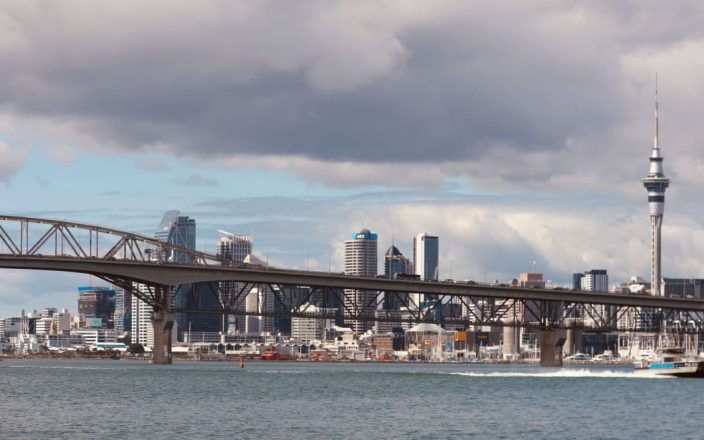Thị trưởng Auckland Wayne Brown muốn xây dựng một bến cảng mới giữa Birkenhead và Point Chevalier, thay vì một đường hầm dưới Cảng Waitemata. Ông chỉ trích kế hoạch của chính phủ Lao động trước đây về một đường hầm có thể tốn hơn 45 tỷ đô la, gọi nó là không thể chấp nhận được.
Brown đề nghị sử dụng một con đường đắp hoặc một số cây cầu từ rạn san hô Meola ở Point Chevalier đến Kauri Point ở Birkenhead. Ông lập luận rằng hình dạng tự nhiên của rạn san hô Meola làm cho nó trở thành một nơi thích hợp để xây dựng một ngã tư, vì nó nhô ra vào bến cảng. Ngoài ra, ông nói rằng các cây cầu rẻ hơn nhiều so với đường hầm.
Ông đề xuất rằng cây cầu mới có thể kết nối với đất thuộc sở hữu của chính phủ trên Bờ Bắc có thể được chia nhỏ để giúp chi trả cho dự án. Brown ước tính chi phí cho kế hoạch cầu của ông sẽ chỉ bằng khoảng 10% chi phí của đường hầm, lưu ý rằng các cây cầu sẽ không cần điều hòa không khí hoặc hệ thống luồng không khí đặc biệt.
Brown không cung cấp một mốc thời gian cụ thể cho việc xây dựng nhưng đảm bảo rằng sẽ mất ít thời gian hơn so với việc chờ đợi chính phủ đưa ra quyết định về đường hầm. Ông so sánh tình hình của Auckland với các thành phố như London và Paris, gợi ý rằng những cây cầu mới có thể giúp giảm giao thông bằng cách cung cấp các tuyến đường thay thế.
Khi được hỏi về tác động lên các con đường địa phương như Đường Meola, Brown thừa nhận công việc đang diễn ra ở đó nhưng tuyên bố rằng kế hoạch cầu sẽ không yêu cầu xé toạc đường. Ông vẫn chưa thảo luận về kế hoạch này với Bộ trưởng Giao thông vận tải Simeon Brown nhưng bày tỏ sự tin tưởng vào đề xuất của mình.
Brown cũng đề cập trước đó ông đã nói với Thủ tướng Christopher Luxon rằng ông sẽ “đánh chìm” kế hoạch đường hầm, cho thấy đó là một lựa chọn tốn kém và đáng xấu hổ cho chính phủ. Ông hy vọng Luxon ủng hộ ý tưởng cầu của mình.






























































